9 Best Bloom Alternatives for 2025
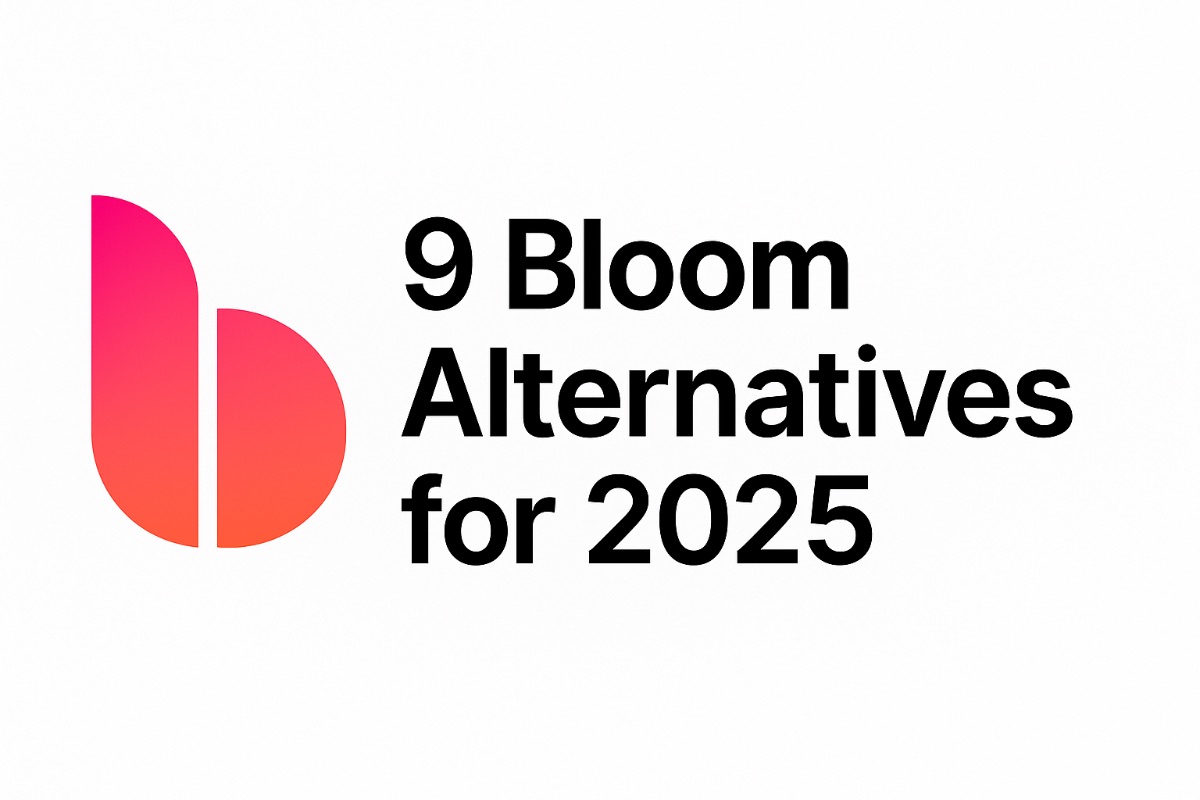

Looking for Bloom alternatives? You’re in the right place
Looking for alternatives to Bloom (or that one perfect Bloom alternative)? You’re in the right place. Below we compare nine platforms — free and paid — that can replace Bloom and help you run smoother projects, automate admin work, and keep clients happy.
Quick Snapshot
- Most customizable workflow tool: Dubsado
- Best client experience & onboarding: Foyer
- Agency friendly request queues: ManyRequests
- Budget friendly creative toolkit: HoneyBook
- Tax & accounting powerhouse: TaxDome
- Solo freelancer suite: Bonsai
- Swiss army knife platform: SuiteDash
- Affordable all rounder: Plutio
- Developer ready portal: Copilot
What is Bloom and why look for alternatives
Bloom, also known as Bloom.io, promotes itself as an all in one CRM, invoicing, and project hub for photographers, creatives, and freelancers. It combines proposals, contracts, payments, and a simple client portal in one place.
That setup works well for small teams, but when you need deeper collaboration, advanced automation, or better branding control, Bloom can start to feel limited. Fees, missing integrations, or feature limits are common reasons teams begin searching for Bloom alternatives.
If that sounds familiar, the following options can give you more control, smoother automation, and a stronger client experience.
The 9 Best Bloom Alternatives in 2025
1. Foyer – Modern Client Portal & Onboarding Automation

Foyer focuses on giving service businesses a clean, modern client experience. You can create a branded client portal, share dashboards, and automate onboarding forms in minutes without complex settings or code.
Each portal acts as a private workspace for your client. You can embed files, use external forms, Foyer forms or live Google Sheets directly, so clients do not have to switch between links. Safedrops make it easy for users to upload files without ever having to register.
Pricing
Starting at $19/user/month (14 day free trial). Annual discount available.
Stand out features
- Branded client portal with drag and drop sections (see it in action)
- Interactive onboarding forms & checklists that reduce back and forth (demo)
- API for easy automation
2. Dubsado – Customizable Workflows
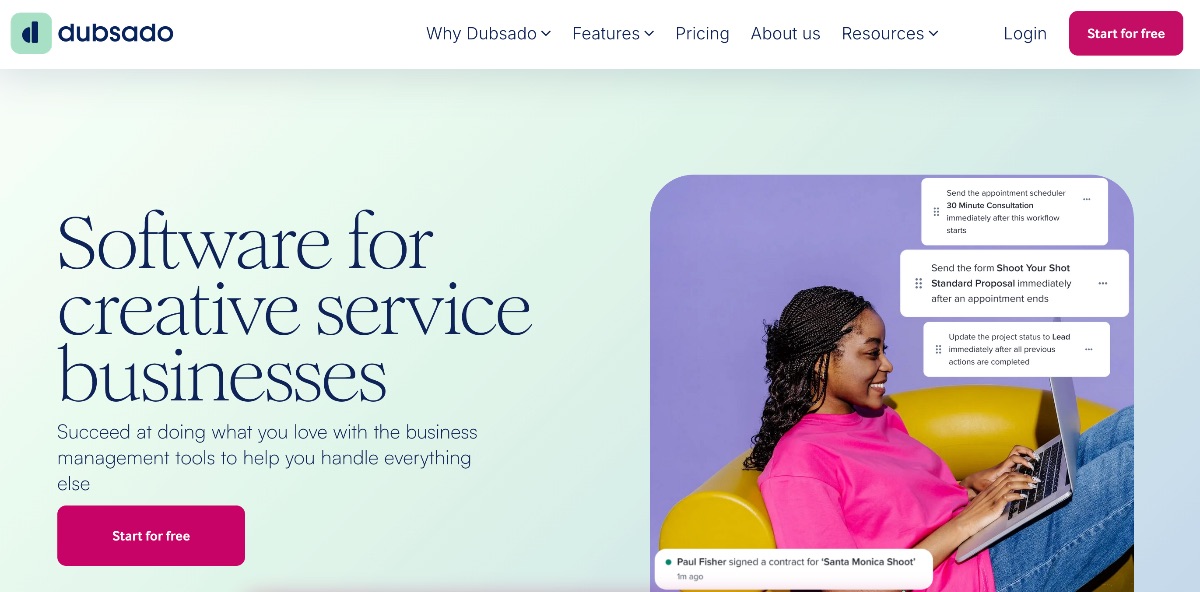
Dubsado is a workflow powerhouse designed for service businesses that want total control. It lets you build drag and drop forms, schedulers, and proposals that feel uniquely yours. Automations link each step so a signed contract can instantly send an invoice and a welcome packet.
While the interface shows its age, users praise the depth of triggers and conditional logic it offers. Unlimited clients and projects are included on every plan, keeping costs flat as you scale. If you’re outgrowing Bloom’s simpler toolkit, Dubsado supplies the most configurable alternative on the market.
Pricing
$20/month Basic or $40/month Premier (7 day free trial).
Stand out features
- Drag and drop form builder with conditional logic
- Multi step automations + scheduler
- Unlimited projects and clients on all plans
Reviews
- Capterra: 4.2 rating (57+ reviews)
- G2: 4.3 rating (72 reviews)
3. ManyRequests – Built for Productized Agencies
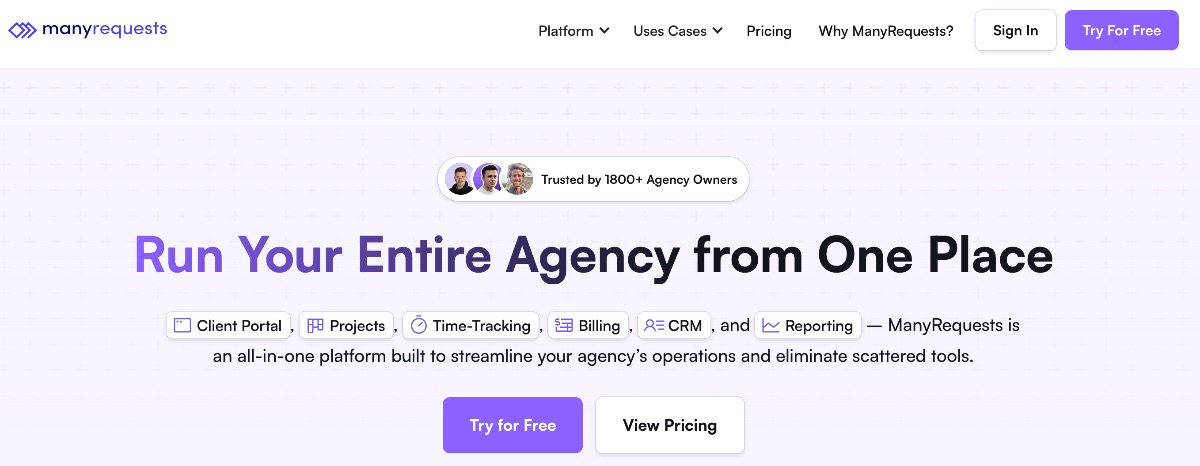
ManyRequests was built from day one for productized service agencies that process a high volume of client tasks. Clients can submit work via a branded request form and track statuses in real time, cutting down on email chains. Its Kanban style queue helps your team prioritize and time track each deliverable.
Because it’s opinionated toward subscription based services, traditional project shops might find it less flexible than Bloom. Still, its blazing fast portal and built in billing make recurring revenue workflows painless. Agencies that live on retainers often see response time metrics improve within weeks of switching.
Pricing
Starts at $99/month for three team members; additional users $20 each.
Stand out features
- Client request queue with Kanban view
- Built in Stripe billing & usage based invoices
- Multi brand white label portals
4. HoneyBook – Templates Creatives Love

Honeybook bundles proposals, invoices, and lightweight automations inside an interface creatives love. Photographers, planners, and designers can choose from hundreds of ready made templates that look great on mobile. Collecting signatures and payments happens in the same flow, so clients finish faster.
The client portal is basic but polished, making it a good fit if your primary bottleneck is sending contracts and getting paid. Automation rules can trigger reminders or follow ups, though more advanced branching isn’t available. At its price point, HoneyBook’s value remains hard to beat for solopreneurs and micro agencies.
Pricing
$19/month Starter, $39/month Essentials, 7 day free trial.
Stand out features
- Proposal + invoice builder with interactive pricing grids
- Simple automation workflows
- Mobile app for on the go approvals
Reviews
- G2: 4.5 rating (180 reviews)
- Capterra: 4.7 rating (662 reviews)
5. TaxDome – Purpose Built for Accountants

Taxdome is an end to end practice management suite built for CPAs, EAs, and bookkeeping firms. It combines a secure client portal, encrypted messaging, and customizable organizers into one workflow. KBA compliant e-signatures help firms meet IRS guidelines without extra plugins.
Automated pipelines move returns from draft to filed, with tasks and reminders firing at each stage. Firms appreciate that bulk actions—like emailing engagement letters—can be done in a couple clicks. If Bloom’s generic portal can’t handle the rigor of tax workflows, TaxDome is purpose built to fill the gap.
Pricing
$50/user/month (annual only) with unlimited clients.
Stand out features
- Secure built in email sync + document requests
- Pre filled tax organizers & bulk e-signatures
- Task automations triggered by status changes
Reviews
- G2: 4.7 rating (635 reviews)
- Capterra: 4.7 rating (3477 reviews)
6. Bonsai – Freelancers’ Admin Sidekick
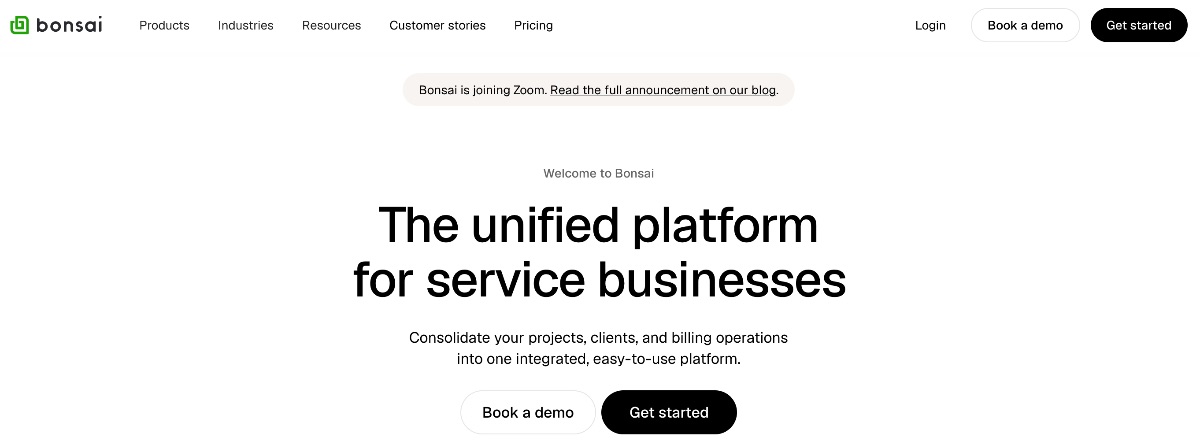
Bonsai positions itself as the one stop shop for freelancers who bill by the hour or by the project. Contracts, proposals, time tracking, and expenses all live under one tab. Everything syncs to simple tax estimates, taking administrative stress off solo operators.
Collaboration features are intentionally minimal, so clients mostly view rather than interact. That makes Bonsai perfect if you just need a clean way to send legal docs and get paid. For creatives who invoice sporadically, its low learning curve and friendly interface are huge wins.
Pricing
$21/month Starter, $32/month Professional, optional Tax add on.
Stand out features
- Auto fill contracts & proposals
- Time tracking and expense reports
- Quarterly tax estimate calculator
Reviews
- G2: 4.3 rating (101 reviews)
- Capterra: 4.6 rating (91 reviews)
7. SuiteDash – The Swiss Army Knife Workspace
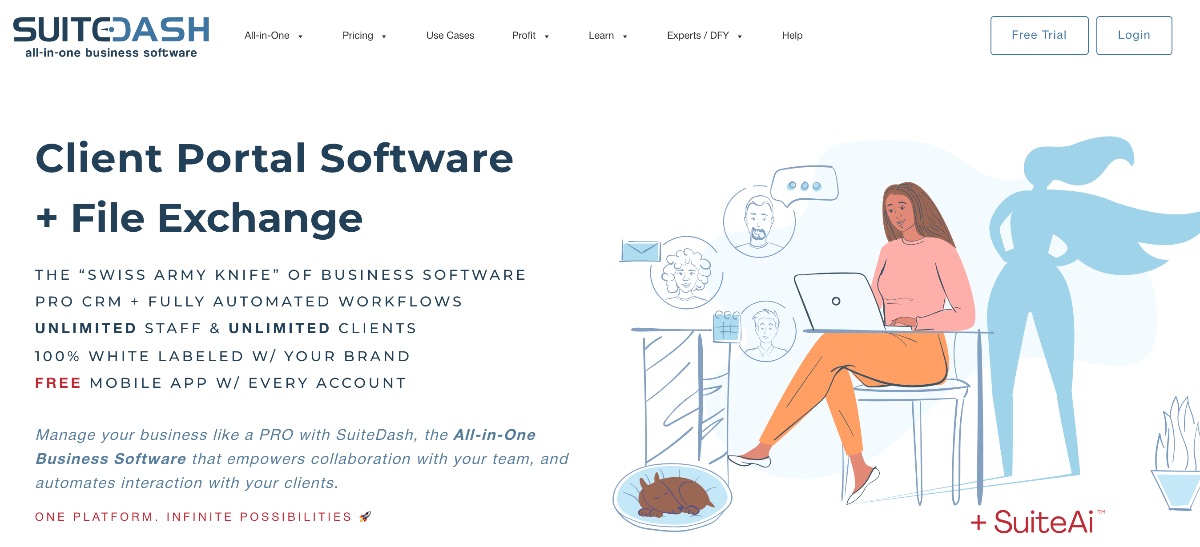
Suitedash calls itself the “Swiss army knife” of client portals, packing CRM, project management, and email marketing into one subscription. You can spin up custom dashboards, learning portals, or ticket systems without leaving the app. Role based permissions let you tailor what each client or staffer sees.
The sheer breadth of tools can feel overwhelming, but power users love replacing four or five single purpose apps at once. White labeling down to your own domain is included even on starter plans, which agencies appreciate. For teams wanting an all in one workspace with no per user fees, SuiteDash is hard to ignore.
Pricing
Starts at $19/month (Thrive plan) with unlimited users; higher tiers add advanced automations.
Stand out features
- CRM, portal, LMS, and email marketing in one app
- Custom domain white labeling on all plans
- Built in subscription billing & client chat
Reviews
- G2: 4.8 rating (595 reviews)
- Capterra: 4.9 rating (607 reviews)
8. Plutio – Affordable All Rounder for Small Studios
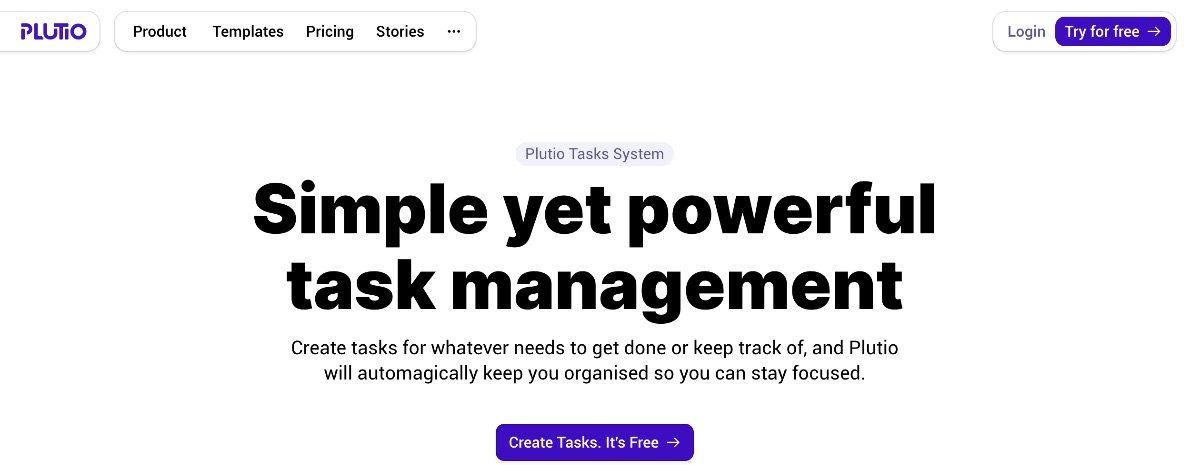
Plutio is an affordable all rounder aimed at freelancers and small studios that need just enough project management. It bundles tasks, time tracking, proposals, and invoices behind a modern UI. Clients get a clean portal where they can approve deliverables and pay invoices.
Recent updates added automations and a public API, giving Plutio more extensibility than Bloom at a similar price. Unlimited clients are included, though storage caps apply on lower tiers. If you want a friendly, budget conscious toolkit that still looks sharp, Plutio deserves a test drive.
Pricing
$19/month Solo, $39/month Studio, $99/month Agency.
Stand out features
- Tasks, invoices, time tracking, and chat
- Public API + Zapier integrations
- Customizable client portal with white label domain
Reviews
- G2: 4.3 rating (56 reviews)
- Capterra: 4.6 rating (162 reviews)
9. Assembly – Developer Ready Client Portal

Assembly, previously known as Copilot, merges a white label client portal with billing, chat, and knowledge base widgets all in one interface. Developers can extend the experience via a robust API or build custom modules, which sets it apart from most no code rivals. Clients interact through a polished, responsive design that feels app like.
Out of the box, automations are lighter than Bloom or Foyer, so advanced teams often lean on Zapier to fill gaps. Pricing is charged per internal user, which can add up quickly for larger agencies. If you need a developer ready platform with beautiful defaults, Copilot checks those boxes.
Pricing
From $29 per internal user/month when billed annually.
Stand out features
- Modular apps (files, invoices, forms, chat)
- API + custom modules
- White label domain and branding
Reviews
- G2: 4.8 rating (245 reviews)
- Capterra: 4.8 rating (26 reviews)
4.7/5 on Product Hunt, 4.6/5 on Capterra. Customers highlight the slick UI but note the per seat cost adds up.
How to choose the right Bloom alternative
Selecting the right Bloom alternative depends on your team size, workflow, and budget. Here are a few steps to help you decide:
- List your most important workflows. Do you need a client portal, invoicing, or automation?
- Count both client and team users. Some tools charge per user, while others have flat pricing.
- Check for integration options like Zapier or native connectors. These will save hours each week.
- Test live portals before you commit. Many platforms, including Foyer, allow a quick demo.
- Think about scalability. Choose software that grows with your business.
- Focus on the client experience. Your client portal is often their first impression of your brand.
- Estimate the time needed to migrate data and train your team.
- Try a live portal. Most tools (including Foyer’s demo) let you test drive before you switch.
Frequently asked questions
Is there a free alternative to Bloom?
Several platforms offer free trials. Foyer provides a 14 day free trial that lets you migrate one or two clients to test real workflows.
What is the best Bloom.io alternative for agencies?
For agencies that handle multiple clients or brands, Foyer and Dubsado are the strongest options. Both support multi brand workspaces.
Do I need to switch everything at once?
No. You can move new projects first, then gradually migrate older clients to minimize disruption.
Will switching affect my client experience?
Not if you communicate clearly. Let clients know about new login links or portal updates ahead of time.
Final Thoughts
Bloom is a solid starter toolkit, but as your business grows you’ll crave more flexibility, better branding, or deeper automations. Each platform above brings something unique—yet if a clean client portal and fast onboarding are at the top of your list, Foyer is the Bloom.io alternative to beat in 2025.
Ready to level up your client experience? Start your free Foyer trial and build your first portal in under five minutes.


